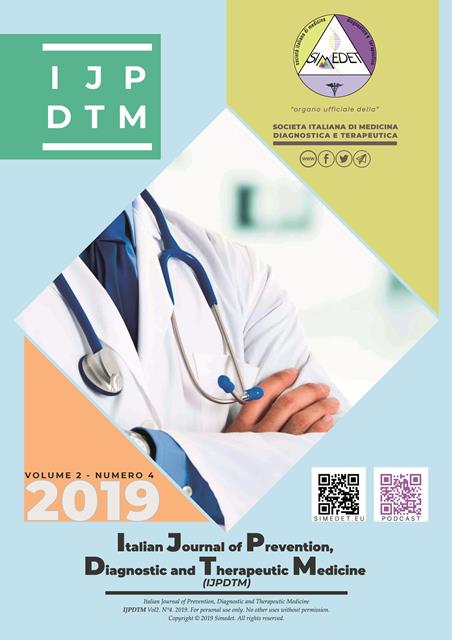Risk factors for Parkinson's disease scientific Literature Vs Clinical Histories
Main Article Content
Abstract
Parkinson's disease is considered a pathological process caused by progressive neurodegeneration and reduction of dopamine concentration. It is conditioned to a series of factors that precipitate the appearance of it, among them we have some environmental, biological and genetic.
This research sought to describe, through a documentary review in Scientific Databases and Clinical Stories, the risk factors of Parkinson's Disease in patients diagnosed in the municipality of Valledupar;
When comparing what is found in scientific articles and clinical histories, extrinsic (environmental as pesticides) and intrinsic (biological as viral infections) factors predispose the appearance of Parkinson's Disease. Finally, this research yielded a series of results from two perspectives: those provided by the scientific evidence, reflected in the scientific articles analyzed and what the Clinical Histories of a Provider Institution of Health Services of the municipality of Valledupar refer to and that when confronted are they highlight those that both sources mention, especially those that have greater incidence and generate a greater predisposition for PE as they are; (exposure to pesticides, traumas cranioencephalic, family history of Parkinson, among others).
Downloads
Article Details

This work is licensed under a Creative Commons Attribution-NonCommercial-NoDerivatives 4.0 International License.
References
Arias, F. (2006). Proyecto de Investigación: Introducción a la metodología científica. Caracas, Venezuela: Editorial Episteme.
Arraez, M., Calles. J., y Moreno de Tovar, L. (2006). La hermenéutica: una actividad interpretativa. Sapiens, 7 (2), 171-181.
Beghdadli, B., Ghomari, O., Hamimed, M.E.A., Azza, A., Edjekouane, I., Ider. M., Baraka, F., Abdi, L., Taleb, A., Benabadji, S., y Kandouci, B.A. (2015). Maladie de Parkinson et facteurs de risqué Professionnels et environnementaux enque´te cas-te´moins dans Ióuest alge´rien. El Sevier Masson, 21-26
Berry, C., La Vecchia, C., y Nicotera, P. (2010). Paraquat and Parkinson´s disease. Cell Death and Differentiation, 1115-1125.
Colprensa. (10 de abril de 2016). En Colombia hay más de 220.000 personas con parkinson. La Opinion. Recuperado de http://www.laopinion.com.co/vida-y-salud/en-colombia-hay-mas-de-220000-personas-con-parkinson-109883#ATHS
Hall, T.O., Wan, J.Y., Mata, I.F., Kerr, K.F., Snapinn, K. W., Samii, A., Robersts, J.W., Agarwal, P., Zabetian, C.P., y Edwards, K.L. (2012). Risk prediction for complex diseases: application to Parkinson disease. Genetics in Medicine, 361- 367.
Houser, M. C., y Tansey, M.G. (2016). The gut-brain axis: is intestinal inflammation a silent driver of Parkinson´s disease pathogenesis?. Nature Partner Journals- Parkinson´s Disease, 1-8.
Klingelhoefer, L., y Reichmann, H. (2015). Pathogenesis of Parkinson disease-the gut-brain axis and environmental factors. Nature Reviews Neurology, 625-636.
Lee, P., Liu, L., Sun, Y., Chen, Y., Liu, C., Li, C., y otros. (2016). Traffic-related air pollution increased the risk of Parkinson's disease in Taiwan: A nationwide study. Environment International, 75 – 81.
Martinez – Fernandez, R., Gasca, C., Sanchez, A., y Obeso, J. (2016). Actualización en la Enfermedad de Parkinson. Revista Médica Clínica las Condes, 27 (3), 363-379.
Morales, O. (2003). Fundamentos de la investigación documental y la monografía. Departamento de Investigacion, 1-14.
Noyce, A., Bestwick, J., Silveria-Moriyama, L., Hawkes, C., Giovannoni, G., Lees, A.J., y Schrag, A. (2012). Meta-Analysis of Early Nonmotor Features and Risk Factors for Parkinson Disease. ANNALS of Neurology, 893 – 901.
Ortiz, G., Pacheco, F., Macias, M., Jimenez, F., Miranda, A., Flores, L.,…Bizter, O. (2011). Toxicidad de plaguicidas y su asociación con la enfermedad de Parkinson. Arch Neurocien, 16 (1), 33-39.
Osman, M. (29 de Noviembre de 2015). Cesar entre los más afectados por Parkinson. EL PILÓN. Recuperado de http://elpilon.com.co/cesar-entre-los-mas-afectados-por-el-parkinson/
Parkinson´s Disease Foundation. (2016). La Enfermedad de Parkinson. Recuperado de http://www.pdf.org/about_pd
Perez, A. (2009). Guía metodológica para proyectos de Investigación. Caracas, Venezuela: FEDUPEL 3ª edición.
Powers, K.M., Smith-Weller, T., Franklin, G.M., Longstreth, W.T., Swanson, P.D., y Checkoway, H. (2008). Dietary fats, cholesterol and iron as risk factors for Parkinson´s disease. Parkinsonism and Related Disorders 47-52.
Svensson, E., Henderson, V.W., Borghammer, P., y Sorensen, H.T. (2016). Constipation and risk of Parkinson´s disease: A Danish population-based cohort study. Parkinsonism and Related Disorders, 1-5.
Tan, X., (2007). Risk factors for Parkinson disease and the path analysis: One-to-one paired design. Neural Regeneration Research, 117-120
Willis, A., Sterling, C., Racette, B. (2010). Conjugal Parkinsonism and Parkinson disease: A case series with environmental risk factor analysis. Parkinsonism and Related Disorders, 163- 166.
Zhang, X., Thompson, M., Xu, Y., (2016). Multifactorial theory applied to the neurotoxicity of paraquat and paraquat-induced mechanism of developing Parkinson´s disease. Laboratory investigation, 1-12.

